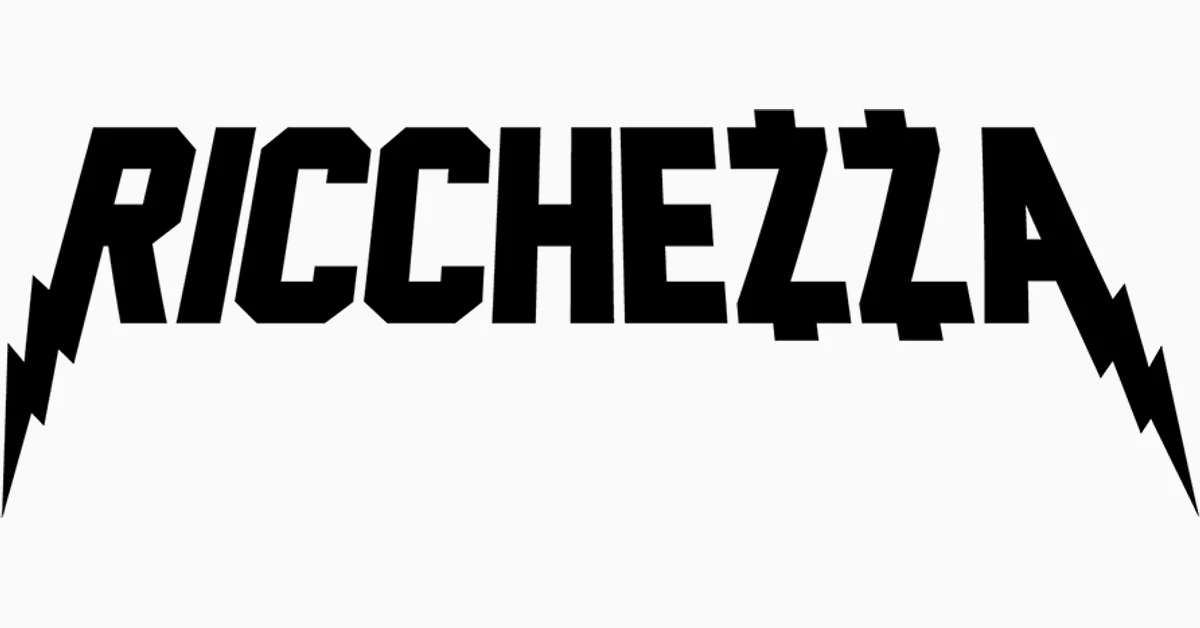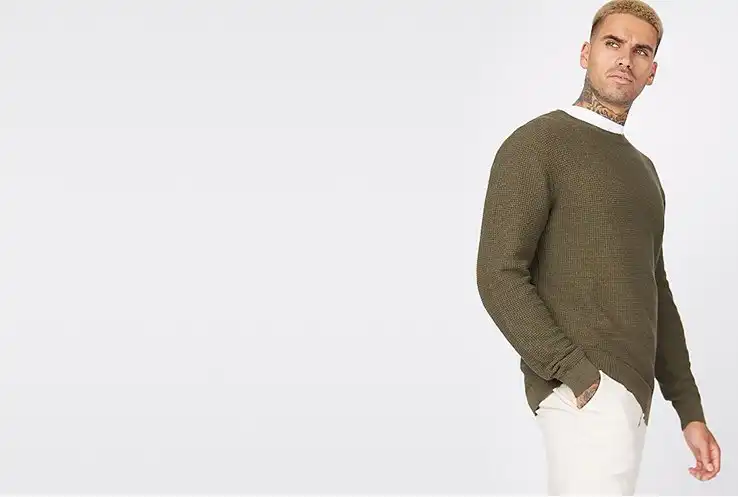As the owner and author at Ricchezza Official, I, Taimoor Arshad, have developed a keen eye for styling, especially when it comes to mastering the art of layering with sweatshirts and shirts.
Layering isn’t just a practical approach for adapting to changing temperatures—it’s a style statement that reflects personal flair and sophistication. Let me walk you through how I’ve perfected this art, sharing insights that might help you elevate your own style game.
Introduction to Layering Techniques
Layering clothing effectively is about combining different garments to create a cohesive and functional ensemble. It’s not just piling one piece over another; it’s about understanding how different textures and weights interact with each other to produce outfits that are not only stylish but also practical.
The Basics of Layering
Starting with the lightest fabrics and adding heavier layers allows for maximum versatility. The basic rule I always follow is simple: begin with materials that sit comfortably against the skin and work your way outwards. For instance, a basic cotton tee can serve as an excellent base layer.
From there, you can add a Ricchezza Shirt for a bit of rugged texture, and then top it off with a fleece-lined sweatshirt for warmth. This progression not only ensures comfort but also maintains a balanced look that doesn’t feel bulky or overdone.
Building a Strong Base
The foundation of any good layered look is crucial for both comfort and style. Personally, I prefer starting with a well-fitted tank top or a thermal, especially during cooler months. This base layer plays a dual role: it sits snugly against the skin, providing warmth, and serves as a smooth canvas for adding more layers.
Remember, if your base isn’t comfortable, the entire outfit can feel off. I’ve found that a breathable, light thermal is perfect as it keeps you warm without overheating, and fits neatly under other garments.
Mixing Textures for Enhanced Style
One of the joys of layering, particularly with sweatshirts and shirts, is the ability to play with textures to create visually engaging outfits. Mixing materials like a soft cotton tee, a rugged denim shirt, and a plush sweatshirt can add depth to your outfit. I’ve noticed that combining different textures not only enhances the outfit’s appearance but also its functionality. For example, the ruggedness of denim offers durability, while the softness of fleece in a sweatshirt provides comfort and warmth.
This blend of practicality and aesthetic appeal is what makes layering such an essential skill in fashion. Whether you’re dressing for a casual day out or tweaking your style for a chilly evening, understanding these basics will put you a step ahead in crafting outfits that are as stylish as they are sensible. Stay tuned as I delve deeper into advanced layering techniques in the upcoming sections.
Exploring Shirt Options for Layering
As I delve deeper into the world of fashion and personal style through my work at Ricchezza Official, I’ve come to appreciate the versatile role shirts play in layering. Not just any shirts—specific choices that elevate your style from simple to striking with just a few thoughtful layers.
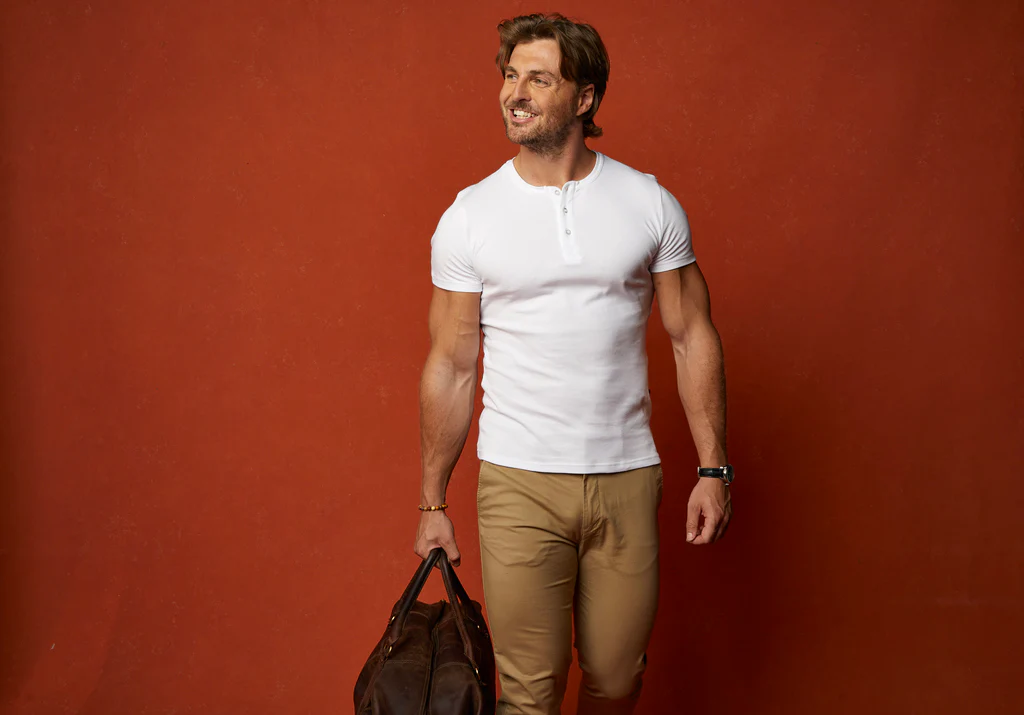
Casual Comfort with Tees and Henleys
Layering for a casual look is both an art and a science. Over the years, I’ve found that combining tees and henleys under sweatshirts not only enhances comfort but also adds a laid-back, stylish dimension to everyday wear. Here’s how I do it:
- Start with a Base: A soft, breathable tee is my go-to base. It’s light enough to sit comfortably under additional layers without adding bulk.
- Add a Henley: Henleys bring texture and depth. With their button plackets, they offer a hint of structure that a typical tee lacks, making them ideal for a visible middle layer.
- Top with a Sweatshirt: A classic crewneck sweatshirt completes this trio, providing warmth and a canvas for the layers underneath to peek through.
This approach isn’t just about staying warm; it’s about creating an ensemble that’s easy to adjust as the day goes on. The layers work together to accommodate changing temperatures, whether you’re indoors or out.
Graphic Tees as Statements
Graphic tees hold a special place in my wardrobe, especially when it comes to layering. They are not just garments but canvases that display personal expressions or preferences. When layering with graphic tees, I always ensure that the outer layers are somewhat subdued to let the tee’s design speak. This balance is crucial—it allows the graphic tee to shine without overwhelming the overall outfit.
Button-Downs for a Polished Look
When the occasion calls for something a bit more refined, button-downs are my secret weapon. Here’s my strategy for incorporating them into layered outfits:
- Choose the Right Fabric: A crisp cotton button-down works wonders. It’s structured yet comfortable, ideal under a soft sweatshirt.
- Play with Colors and Patterns: I prefer solid colors for a classic look or subtle patterns like pinstripes or checks for a touch of intrigue.
- Layer Intelligently: The button-down goes under a sleek, fitted sweatshirt. This combination ensures the collar and cuffs can be displayed, adding a formal edge to a traditionally casual piece.
This method transforms a simple sweatshirt into appropriate attire for more formal settings, proving that layering can be both stylish and functional.
By experimenting with these shirt options, I’ve not only expanded my wardrobe’s versatility but also enhanced my ability to express different aspects of my personality through fashion. Each layer serves a purpose, and each choice reflects a part of who I am or what I feel that day.
The Sweatshirt Advantage
In the vibrant world of fashion, where style meets comfort, sweatshirts have become a staple in my wardrobe, not just for their warmth but for their versatility in layering. As the owner and author of Ricchezza Official, I’ve experimented extensively with various sweatshirt styles, discovering their potential to transform any outfit. Here, I share how different types of sweatshirts can enhance your layered looks, whether you’re dressing down for a casual day or styling up for an evening out.
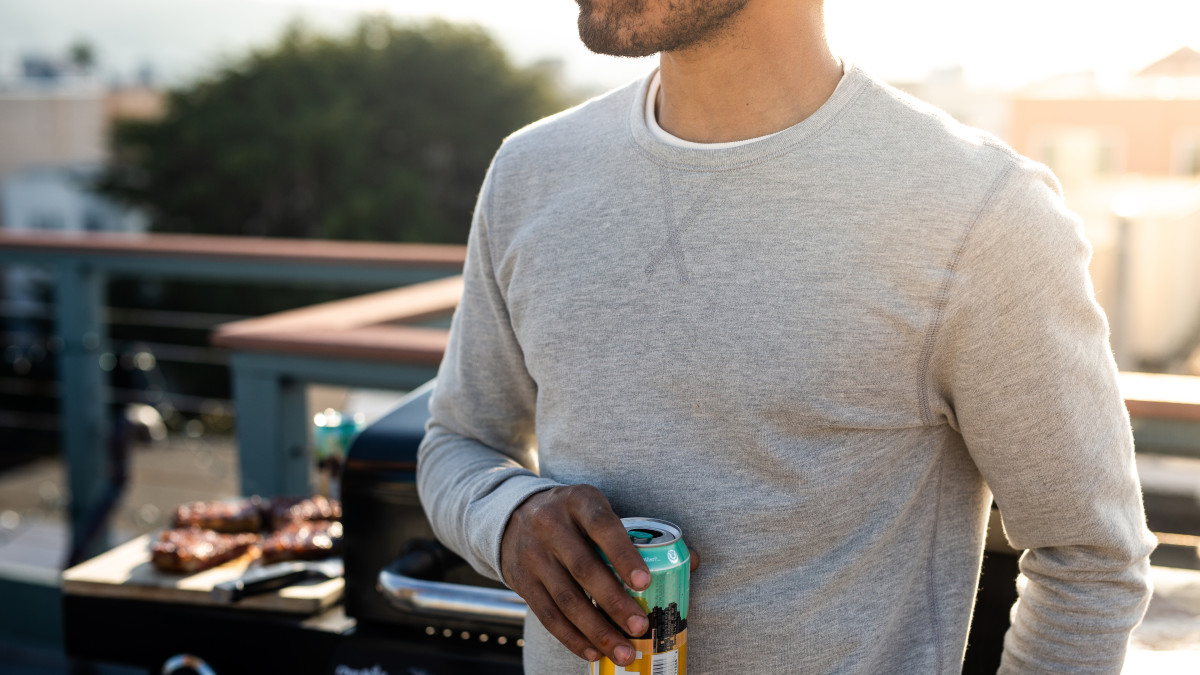
Crewneck Versatility
Crewneck Ricchezza Sweatshirts with high quality attractive Ricchezza Pants hold a special place in my layering arsenal. Their simple, collarless design makes them an excellent choice for a clean, understated look, or as a base for more elaborate outfits. Here’s why I frequently reach for a crewneck:
- Simplicity is Key: A solid-colored crewneck can serve as a perfect canvas for accessories like bold necklaces or patterned scarves.
- Flexibility for Any Occasion: Whether I’m layering it over a button-down for a smart-casual office look or under a denim jacket for a night out, the crewneck adapts effortlessly.
- Comfort Meets Style: The lack of restrictive elements like collars or zippers means crewnecks offer comfort that lasts all day, which is essential for my busy schedule.
The crewneck’s adaptability isn’t just about looks; it’s about functionality, providing warmth without bulk, making it ideal for transitioning between seasons.
Casual Cool with Hoodies
Hoodies are the epitome of casual comfort but don’t underestimate their potential in a stylish layered outfit. I love using Ricchezza Hoodies to add a relaxed, youthful vibe to my ensembles. Here’s how I integrate hoodies into my layered outfits:
- Street Style Savvy: Pairing a graphic hoodie with a leather jacket and distressed jeans creates a rugged, edgy look.
- Layered for Leisure: A hoodie over a collared shirt brings an unexpected twist to traditional leisurewear, combining formality with ease.
- Functionality Forward: The hood and front pocket add practical elements that are perfect for chilly evenings or when I need to carry essentials without a bag.
Hoodies aren’t just for lounging—they’re a dynamic component of modern layering that can cater to both comfort and style.
Zip-Up Functionality
Zip-up sweatshirts are perhaps the most versatile type of sweatshirt in my collection. Their functionality extends beyond mere aesthetic appeal, providing practical benefits that make them indispensable for layering. Here’s why I find zip-ups so useful:
- Ease of Use: The full zipper makes it easy to adjust my temperature and look without having to remove the sweatshirt entirely. This is particularly beneficial during unpredictable weather.
- Styling Flexibility: I can wear it zipped up for a sleek, fitted look or open for a more relaxed feel, showing off the layers underneath.
- Perfect for All Settings: Whether it’s a casual meeting or a brisk walk in the park, zip-ups adapt to the context of almost any activity with ease.
Incorporating zip-up sweatshirts into my layered outfits not only enhances my style but also ensures I remain prepared for any weather condition or social setting. Each type of sweatshirt—be it a classic crewneck, a casual hoodie, or a functional zip-up—brings its unique strengths to layered outfits, proving that sweatshirts are far more than just basic leisurewear. They are essential tools in the art of layering, capable of elevating any wardrobe with both style and practicality.
Advanced Layering Techniques
As my journey in fashion continues, I’ve embraced more complex layering techniques that not only play with different garments but also experiment with colors and accessories to truly personalize the look. In this section, I’ll dive into some advanced strategies that can take your layering game to a whole new level, focusing on creating visual interest through color and accessorizing.
Color Play: Creating Visual Interest
Understanding and applying color theory is crucial when you want to elevate your layered outfits. Here’s how I approach color play in layering:
- Start with a Base Color: Choose a dominant base color that is easy on the eyes and can work as a foundation. This could be a dark hue like navy or a light shade like beige.
- Add Contrast or Complementary Colors: Introduce a second color that contrasts or complements the base. For example, a navy base pairs beautifully with a grey or burgundy layer.
- Balance with Neutrals: Ensure the look remains harmonious by balancing more vivid colors with neutrals.
This approach helps in achieving a cohesive look that’s visually appealing and not overwhelming.
The Power of Neutrals
Neutrals are the backbone of any sophisticated wardrobe, especially when it comes to layering. Here’s why I often lean towards neutrals:
- Versatility: Neutrals like black, grey, and beige can blend with almost any color, making them incredibly versatile for layering.
- Create a Clean Look: Layering with neutrals can produce a clean and elegant appearance that’s perfect for both casual and formal settings.
- Focus on Textures: With neutral colors, I like to play up the textures—combining a smooth black tee with a ribbed grey cardigan, for example, adds depth without relying on color alone.
Neutrals are not just safe choices; they are stylish ones that lend a subtle elegance to layered outfits.
Strategic Use of Color Accents
Adding color accents is one of my favorite techniques to inject personality into an outfit. Here’s how I do it:
- Choose One Accent Color: A single, bright color like red or emerald can act as a focal point in your outfit. Use it sparingly, such as a bright undershirt peeking out from a sweatshirt.
- Balance the Brightness: Ensure the rest of your outfit is subdued if you’re using a bright accent. This helps the accent color pop without clashing with other elements.
- Consider the Occasion: Bright accents are more suited to casual or creative environments than more conservative settings.
Color accents can transform a simple layered look into something bold and memorable, making it a powerful tool in your style arsenal.
Accessorizing Layered Outfits
Accessories are not just additions but essential components of layered outfits. They can add function, style, or both. Here’s how I incorporate accessories into my layered looks:
- Scarves: A scarf can add color, pattern, and warmth. Depending on how you tie it, it can also change the outfit’s focal point.
- Hats: Whether it’s a beanie in winter or a fedora in spring, hats can complement your layered outfits while also serving practical purposes.
- Jewelry: Minimalist jewelry can enhance a layered look without overpowering it. A simple chain necklace or a set of bracelets can add a touch of sophistication.
By thoughtfully choosing and coordinating accessories, you can enhance the visual interest and individuality of your layered outfits. Accessories not only complete the look but also make it distinctly yours. Each element, from color to accessories, plays a crucial role in crafting outfits that are not just layered but artfully composed.

Seasonal Adaptations in Layering
As someone who has always been passionate about fashion and the functionality of clothing, I’ve learned that the key to mastering the art of layering is adaptability—especially through the changing seasons. In this post, I’ll share some of the strategies I’ve developed for adjusting your layers to suit different climates, ensuring you stay comfortable and stylish year-round.
Seasonal Savvy: Adjusting Layers for the Climate
Understanding how to modify your layering approach as the weather changes is crucial. It’s not just about adding or subtracting layers; it’s about choosing the right materials and styles that match the temperature and your activities.
Layering for Cooler Weather
When the temperature drops, my priority is to stay warm without sacrificing mobility or style. Here’s how I layer effectively in cooler weather:
- Start with a Moisture-Wicking Base Layer: This keeps you dry and warm by pulling sweat away from your skin. Materials like merino wool or synthetic fibers work best.
- Add an Insulating Middle Layer: A fleece or a wool sweater serves as a great insulator and can be very stylish.
- Top with a Protective Outer Layer: A weather-resistant jacket not only keeps the wind and rain at bay but also adds an extra layer of warmth.
- Accessorize for Warmth and Style: Scarves, hats, and gloves can make a significant difference in keeping you warm and can be coordinated with your outfit for added style.
These layers work together to trap heat and block out the cold, making winter weather much more bearable.
Spring Layering: Light and Airy Approaches
Spring can be unpredictable with its mix of cool mornings and warm afternoons. Here’s how I adjust my layers for spring’s capricious weather:
- Opt for Lighter Base Layers: A breathable cotton tee or a light long-sleeve shirt can be perfect for spring.
- Choose Versatile Mid-Layers: A denim jacket or a lightweight cardigan allows for easy adjustments throughout the day.
- Embrace Bright Colors and Soft Pastels: Spring is the perfect time to add some color to your wardrobe, reflecting the season’s lively spirit.
This layering approach not only keeps you comfortable but also aligns with the vibrant energy of spring.
Adapting Layers for Warmer Climates
Layering in warm weather might seem counterintuitive, but it’s all about choosing the right materials and styles to enhance comfort. Here’s how I layer when the temperature rises:
- Focus on Breathable Fabrics: Linen and lightweight cotton are my go-to choices as they allow air circulation, keeping you cool.
- Use Layers for Sun Protection: A light, long-sleeved shirt can protect your skin from the sun while keeping you cool.
- Roll Up Your Sleeves: Rolling up the sleeves of your shirt can help you regulate your body temperature without removing layers.
- Incorporate Loose Fits: Looser clothing doesn’t cling to your body, allowing air to circulate better.
Layering effectively in warm weather is all about enhancing comfort while protecting against the sun and adapting quickly to changing temperatures within the day.
Through my own experiences, I’ve learned that layering isn’t just a fashion statement—it’s a practical strategy for dealing with the elements. By adjusting your approach to layering with the seasons, you can ensure that you’re always comfortable, no matter the weather, while also maintaining your style. Remember, the key is in the materials, the fit, and how each layer interacts with the other to create a cohesive and functional outfit.
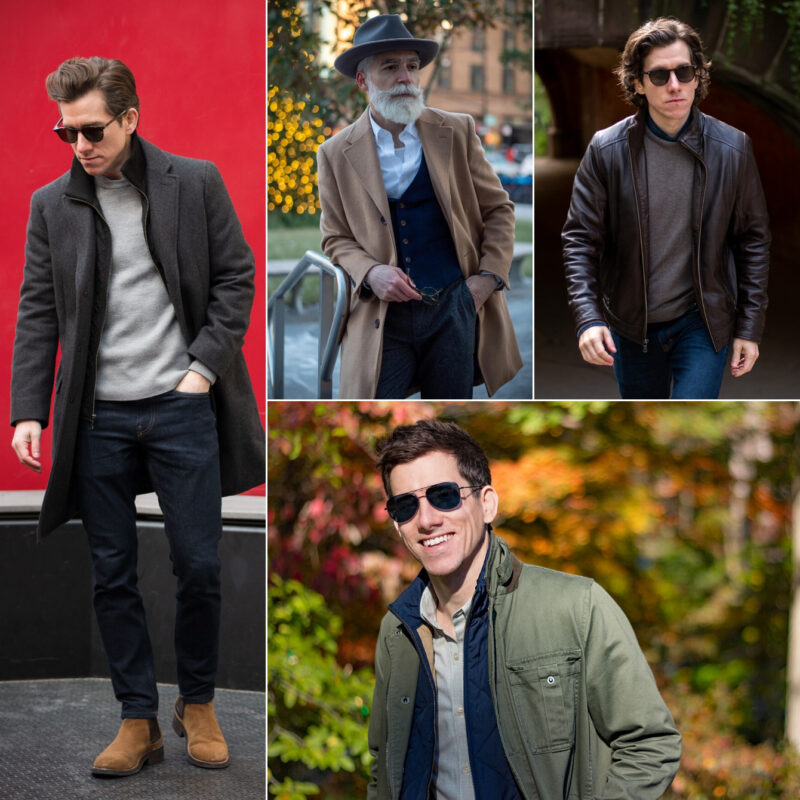
Conclusion and Final Thoughts
As I wrap up this extensive guide on “Layering Like a Pro with Sweatshirts and Shirts,” I want to reflect on the journey we’ve taken together through the art of layering. It’s a skill that I, Taimoor Arshad, have honed over the years at Ricchezza Official, not just for style but for functionality too. From selecting the right base layers to incorporating statement pieces, every aspect of layering has its nuances. If you are looking for more informative blogs to enhance fashion sense visit.
Recap and Key Takeaways
Here’s a brief recap of the essential points we’ve covered, designed to help you master the layering game:
- Start with the Right Base: Begin with comfortable, fitting base layers like tank tops or thermals that set the tone for your entire outfit.
- Add Versatility with Shirts: Use different types of shirts — from casual tees to polished button-downs — to add depth and adapt your outfit to various occasions.
- Choose Sweatshirts Wisely: Opt for crewnecks, hoodies, or zip-ups depending on the look you’re going for, each offering its unique style and comfort level.
- Adjust for the Season: Modify your layering strategy with the changing weather, ensuring you remain comfortable while looking effortlessly chic.
- Play with Colors and Accessories: Utilize color theory and strategic accessories to enhance your outfits, making each layer stand out or come together cohesively.
Each of these elements plays a critical role in ensuring that your layered outfits are not only stylish but also practical and comfortable, no matter the occasion or weather.
Encouraging Personal Style Exploration
One of the most exciting aspects of fashion is the opportunity to express one’s personality and style. I encourage you, my readers, to take these tips and make them your own. Experiment with different textures, contrast colors, and unique combinations. Remember, fashion is as much about personal expression as it is about following trends.
Layering is an art form that allows you to be creative and bold. Whether you’re just stepping out for a casual meet-up or dressing up for a formal event, how you layer can set you apart. So, don’t be afraid to mix things up, try new ideas, and see what works for you. After all, every layer you add is a part of your story, a piece of the puzzle that is uniquely yours.
I hope this guide inspires you to explore layering in new ways and that you feel more confident in your ability to layer like a pro. Remember, the key to great style is not just following rules—it’s about making them work for you. Happy layering!
